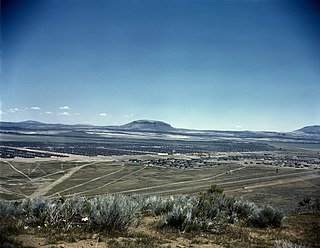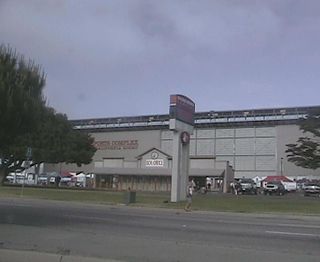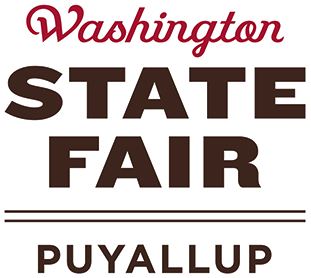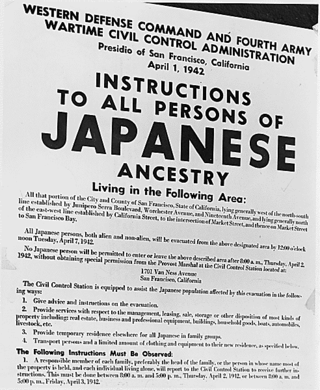
During World War II, the United States forcibly relocated and incarcerated about 120,000 people of Japanese descent in ten concentration camps operated by the War Relocation Authority (WRA), mostly in the western interior of the country. About two-thirds were U.S. citizens. These actions were initiated by Executive Order 9066, issued by President Franklin D. Roosevelt on February 19, 1942, following the outbreak of war with the Empire of Japan in December 1941. About 127,000 Japanese Americans then lived in the continental U.S., of which about 112,000 lived on the West Coast. About 80,000 were Nisei and Sansei. The rest were Issei immigrants born in Japan, who were ineligible for citizenship. In Hawaii, where more than 150,000 Japanese Americans comprised more than one-third of the territory's population, only 1,200 to 1,800 were incarcerated.

The War Relocation Authority (WRA) was a United States government agency established to handle the internment of Japanese Americans during World War II. It also operated the Fort Ontario Emergency Refugee Shelter in Oswego, New York, which was the only refugee camp set up in the United States for refugees from Europe. The agency was created by Executive Order 9102 on March 18, 1942, by President Franklin D. Roosevelt, and was terminated June 26, 1946, by order of President Harry S. Truman.

The Heart Mountain War Relocation Center, named after nearby Heart Mountain and located midway between the northwest Wyoming towns of Cody and Powell, was one of ten concentration camps used for the internment of Japanese Americans evicted during World War II from their local communities in the West Coast Exclusion Zone by the executive order of President Franklin Roosevelt.

The Gila River War Relocation Center was an American concentration camp in Arizona, one of several built by the War Relocation Authority (WRA) during the Second World War for the incarceration of Japanese Americans from the West Coast. It was located within the Gila River Indian Reservation near the town of Sacaton, about 30 mi (48.3 km) southeast of Phoenix. With a peak population of 13,348, it became the fourth-largest city in the state, operating from May 1942 to November 16, 1945.

The Tule Lake War Relocation Center, also known as the Tule Lake Segregation Center, was an American concentration camp located in Modoc and Siskiyou counties in California and constructed in 1942 by the United States government to incarcerate Japanese Americans, forcibly removing from their homes on the West Coast. They totaled nearly 120,000 people, more than two-thirds of whom were United States citizens. Among the inmates, the notation "Tsurureiko (鶴嶺湖)" was sometimes applied.

Minidoka National Historic Site is a National Historic Site in the western United States. It commemorates the more than 13,000 Japanese Americans who were imprisoned at the Minidoka War Relocation Center during the Second World War. Among the inmates, the notation 峰土香 or 峯土香 was sometimes applied.

The Fairplex has been the home of the L.A. County Fair since 1922. Known prior to 1984 as the Los Angeles County Fairgrounds, it is located in the city of Pomona, California. The L.A. County Fair is held during the month of May since 2022, but the facility is used year-round to host a variety of educational, commercial, and entertainment such as trade and consumer shows, conventions, and sporting events.

The Topaz War Relocation Center, also known as the Central Utah Relocation Center (Topaz) and briefly as the Abraham Relocation Center, was an American concentration camp in which Americans of Japanese descent and immigrants who had come to the United States from Japan, called Nikkei were incarcerated. President Franklin Roosevelt signed Executive Order 9066 in February 1942, ordering people of Japanese ancestry to be incarcerated in what were euphemistically called "relocation centers" like Topaz during World War II. Most of the people incarcerated at Topaz came from the Tanforan Assembly Center and previously lived in the San Francisco Bay Area. The camp was opened in September 1942 and closed in October 1945.

The Rohwer War Relocation Center was a World War II Japanese American concentration camp located in rural southeastern Arkansas, in Desha County. It was in operation from September 18, 1942, until November 30, 1945, and held as many as 8,475 Japanese Americans forcibly evacuated from California. Among the inmates, the notation "朗和" was sometimes applied. The Rohwer War Relocation Center Cemetery is located here, and was declared a National Historic Landmark in 1992.

The Salinas Sports Complex is a sporting complex located in Salinas, California on the Central Coast. The main feature of the complex is a 17,000-seat stadium for California Rodeo Salinas. Soccer, football, and rugby was also played at the main stadium before the opening of Rabobank Stadium next door.

The Washington State Fair, formerly the Puyallup Fair, is the largest single attraction held annually in the U.S. state of Washington. It continually ranks in the top ten largest fairs in the United States and includes agricultural and pastoral displays and shows, amusement rides, and concert series. The Washington State Fair hosts two annual events: the 21-day Washington State Fair in September, and the four-day two weekend Washington State Spring Fair in April. The land and facilities are also leased to independent events and conventions throughout the year.

The Big Fresno Fair, founded in 1884, is an annual fair held at the Fresno County Fairgrounds. The Big Fresno Fair is managed by the 21st District Agricultural Association, an entity of the California Department of Food and Agriculture Division of Fairs & Expositions. It is the largest annual event in the San Joaquin Valley, attracting around 600,000 people each October during its twelve-day run featuring exhibits, a livestock show, live horse racing, musical entertainment, educational programs and more. The Fair provides a link between urban and rural California, serving as a tool to educate visitors on the region's rich agricultural industry. The mission of The Big Fresno Fair is to "Educate, Celebrate and Have Fun".

Arboga is an unincorporated community in Yuba County, California. It is located 3 miles (4.8 km), south of Olivehurst on the Sacramento Northern Railroad, at an elevation of 56 feet. It was named in 1911 by the pastor of the Mission Covenant Church of Sweden for his hometown of Arboga, Sweden.

The Day of Remembrance is a day of commemoration for the incarceration of Japanese Americans during World War II. It is a day for people of Japanese descent in the U.S. to reflect upon the consequences of Executive Order 9066. The Day of Remembrance also creates a space for the facilitation of dialogue and informing the public about the repercussions of such government action. Events in numerous U.S. states, especially in the West Coast, are held on or near February 19, the day in 1942 that Executive Order 9066 was signed by President Franklin D. Roosevelt, requiring internment of all Americans of Japanese ancestry. Areas where people of Japanese descent in the U.S. were forced to relocate included Arizona, Colorado, Wyoming, Utah, Arkansas, and Idaho. There are events held in each of these states as well. Events are not only relegated to the West Coast and it is widely observed in areas such as New England, Chicago, Alaska, Philadelphia, and New York.
The Empty Chair Memorial is a memorial located at Capital School Park in downtown Juneau, Alaska, United States. It is dedicated to the 53 Juneau residents of Japanese origin who were forcibly relocated and imprisoned in inland internment camps during World War II, as well as to recognize Juneau citizens for their helpful response when the families returned after the war. It is the first memorial in Alaska regarding the internment of Japanese Americans during the war.

The Temporary Detention Camp for Japanese Americans / Pomona Assembly Center is one of the places Japanese Americans were held during World War II. The Pomona Assembly Center was designated a California Historic Landmark on May 13, 1980. The Pomona Assembly Center is located in what is now called the Fairplex in Pomona, California in Los Angeles County. The Pomona Assembly Center was called Los Angeles County Fairgrounds in 1942.

The Temporary Detention Camp for Japanese Americans / Santa Anita Assembly Center is one of the places Japanese Americans were held during World War II. The Santa Anita Assembly Center was designated a California Historic Landmark (No.934.07) on May 13, 1980. The Santa Anita Assembly Center is located in what is now the Santa Anita Racetrack in Arcadia, California in Los Angeles County.
Cherry Kinoshita was a Japanese American activist and leader in the Japanese American Citizens League (JACL). She helped found the Seattle Evacuation Redress Committee and fought for financial compensation for Japanese Americans who had been incarcerated during World War II.
The Merced Assembly Center, located in Merced, California, was one of sixteen temporary assembly centers hastily constructed in the wake of Executive Order 9066 to incarcerate those of Japanese ancestry beginning in the spring of 1942, following the attack on Pearl Harbor and prior to the construction of more permanent concentration camps to house those forcibly removed from the West Coast. The Merced Assembly Center was located at the Merced County Fairgrounds and operated for 133 days, from May 6, 1942 to September 15, 1942, with a peak population of 4,508. 4,669 Japanese Americans were ultimately incarcerated at the Merced Assembly Center.
















